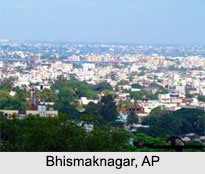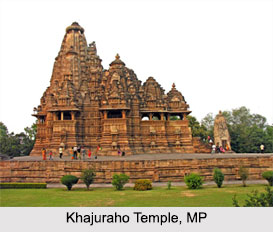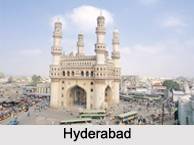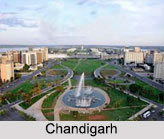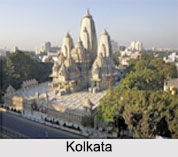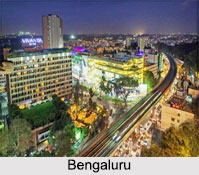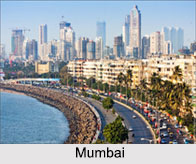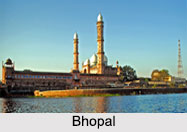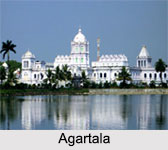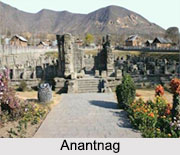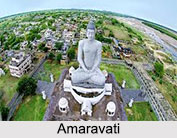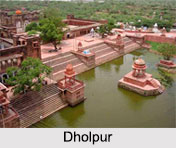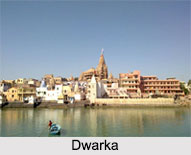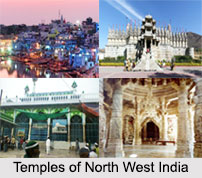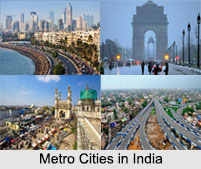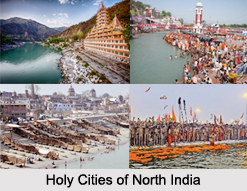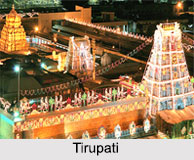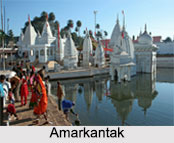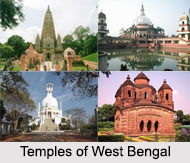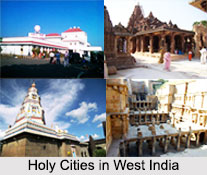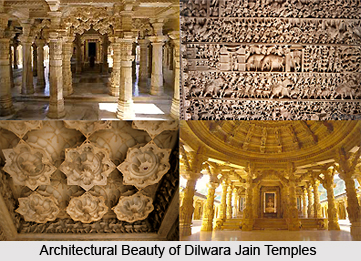
Delwara Jain Temple: Mount Abu, Rajasthan is noted for the Delwara Jain Temples whose origin dates back to as early as `11th- 13th centuries`. They are built in commemoration of the famous Jain Tirthankaras. Thus Mount Abu , Rajasthan has become a favorite destination for the devotees and pilgrims. All five temples, dedicated to the Jain Tirthankaras, are purely made from marble with intricate carvings.
Amongst all these temples The Vimal Vasahi temple is the ancient one. It was dedicated to 1st Tirthankar. A businessman and also a spokesperson of the then king of Gujarat, Vimal Shah constructed it in 1031 A.D. It also stands as outstanding instance of `temple architecture`. In the center, idol of Rishabhdev has been enshrined. There is a huge Courtyard with fifty-two tiny shrines, each housing a wonderful statue of thirthankaras. These shrines along with forty eight gracefully engraved pillars form the gateway to the courtyard. Another temple, The Lun Vasahi Temple, has been built in commemoration of `22nd Tirthankaras-Neminath`. 2 brothers , namely Vastupal and Tejpal was constructed in 1231 A.D. They were the ministers of Raja Vir Dhawal, who was a ruler of Porwal Jain community of Gujarat. Excellent artwork is depicted in several items of this temple like door shells, towers, epistyles, and carvings on porches.
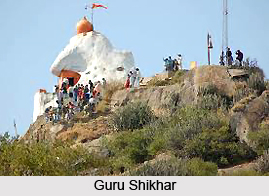
Gaumukh Temple: Gaumukh temple is another significant place at Mount Abu, Rajasthan. Legend says that there was a natural spring, which originated through a head of a sculpted cow. Hence it is called Gaumukh . As also has been mentioned before, the popular saint Vashishtha performed a `yagna` here. One also finds a wonderful hill temple of Arbuada, the powerful serpent. It was wonderfully curved hill temple. In the adjoining area also one finds a spectacular effigy of Nandi, the holy bull.
Adhar Devi Temple: It is a landmark of Mount Abu , Rajasthan. The temple is ripped off by a large rock. One needs to climb three hundred and sixty stairs. It has becomes a popular tourist locale.
Sunset Point is another place of interest at Mount Abu, Rajasthan. Special attraction is the spectacle of sunset with mountains strewn in the golden hue.
Another interesting place of interest in Mount Abu, Rajasthan is Honeymoon Point. It is also popular as Andra Point. It offers a panoramic view full with charming plains and valleys in abundance. Especially it looks superb at the time of twilight.
Shri Raghunathji Temple: This temple is built in commemoration of Shri Raghunathji. A wonderful image was enshrined and it was built during fourteen century A.D. Shri Ramanand, a popular preacher of Hinduism, constructed it. It was located near the `Nakki` lake .
Gardens and Parks: A number of parks and gardens are built which interlaces through beautiful hills and mountains. Gandhi Park, Municipal Park, Ashok Vatika, Shaitan Singh Park and Terrace Garden deserve mentioning.
Museum and Art Gallery: It is a repertoire of Jain bronze sculptures, brass works etc. which was brought out during archeological excavations. It dated back as early as eight to twelfth century A.D. It has its location at the Raj Bhawan.
Trevor`s Tank (5 km): It has derived its name from the British engineer who had supervised its construction. Trevor`s Tank is thronged with dense wooded hillocks housing multiple of beautiful birds like pigeons, peacocks and partridges. It lies at a distance of near about five kms from Mount Abu, Rajasthan.
>Achalgarh (8 km): Lying almost eight kms from Mount Abu, Rajasthan, Achalgarh is a beautiful fort with a number of exquisite Jain temples built within the premise. Amongst them the names of Achaleswar Mahadev Temple and Kantinath Jain Temple. The former temple was built in 1412 A.D. Kantinath Jain Temple was constructed in 1513 A.D. A gold plated image has been enshrined. In the close vicinity of Achaleswar Mahadev Temple one can also find a beautiful sculpture of `Parmar Dharavarsh`. Mandakini Kund is also another attraction here. During fourteenth century A.D Rana Kumbha constructed this spectacular fort.
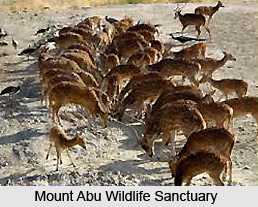
Guru Shikhar (15 km): Another tourist locale of Mount Abu, Rajasthan is Guru Shikhar. It has its location almost fifteen kms from this place. Its highest peak rises to about 1722 mts. It offers a panoramic view of Mount Abu , Rajasthan and its nearby locales.
A tiny Shaivite shrine and also a beautiful ` temple of Dattatreya`, which is placed on the shikhar, are worth visiting.
Mount Abu Sanctuary: It is a landmark of Mount Abu, Rajasthan that encompasses a total area of more than 288 sq. km. The sub-tropical evergreen forests produce all the lushness to the place. When cool breeze gushes through, a tourist`s mind is fascinated by the sweet smell of beautiful flowers like wild roses and jasmine. This sanctuary is a storehouse of wide variety of both flora and fauna. Leopard, sloth bear, wild boar, Sambar, Chinkara and Langur are note worthy. It also houses bird species which more than two fifty in number. Gray jungle fowl is significant. All the bird lovers make visit to this sanctuary once and even more.
Om Shanti Bhawan: People also identify it as the Universal Peace Hall. `It is the Brahma Kumari`s World Spirituality University`. Interestingly, there is a huge hall with no towers, giving accommodation to three thousand and five hundred people.
Toad Rock: The uniqueness is that this rock is built on its own overhanging the calm waters with the shape resembling the shape of a toad that is ready to make a dive onto the blue lake.
Brahmakhadd Temple: This temple is noted for its exquisite work of architecture. It is a place of interest in Mount Abu, Rajasthan. The idol of Lord Shiva has been enriched with great veneration. Images of deity Parvati and also the holy bull of Lord Shiva namely Nandi are placed outside. In the temple one finds a pit. Legend says that it has been formed by the foot of Lord Shiva.
